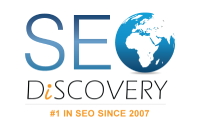As the years go by, new elements are incorporated into web design due to the advancement of technology. Some elements when integrated tenderly do help in telling stories and explaining more about your organization while other elements when incorporated enhance how content gets displayed on devices. As a business owner, having a business website of your own is the perfect tool for getting potential clients and more customers to offer your services and selling your products. Each web designer and web site owners tend to have different approaches when it comes to designing a website. Although there is a quality checklist of concepts that must be accounted for. Web Design is an art and thus for you to get outstanding results when designing one, here are some of the elements you will need to ensure you get right.
1. Content.
Content is the prime element and it plays a major role when it comes to Search Engine Optimization. This is the most prime reason as to why prospects do visit your website. As a site owner, you need to ensure that you focus greatly on developing world-class content when developing your website. Ensure that you include the following; –
- High -quality videos.
- High-resolution images that will make your website stickier.
- Relevant information.
People who visit your site are your potential clients and they need information quickly. You need to ask yourself a bunch of questions like, Is your product brand worth the trust? Are you experienced and worth delivering outstanding products and services when given a chance? Given the fact that most people tend to react quickly to certain things based on their first impression as the owner of the website trying to sell your products and services, ensure that you communicate effectively and clearly on what you are offering. Information display should be a fast read and easily digestible.
Pay attention to each word. Are they worth it? Do you need them when selling out your products and services? Efficiency is essential because redundant words might dull your product brand and reduce your selling points. Ensure that you use headings as titles and display your texts into organized sections. With this, your readers will be able to have a clear picture of what exactly you are bringing to the table. Instead of constructing long, boring, and rambling sentences, break the long lists into either categorized or uncategorized lists.
As far as this element is concerned, never forget to look past your homepage or webpage. Ensure that both your “About” and “Contact” pages project the correct information and take the relevant tone. With the right content, your website’s design will be effective, engaging, and quite popular.
2. Layout and Visual Appearance.
How your website is displayed to others is a vital element when it comes to Web Design. First impressions are usually crucial especially when you want to impress your prospects as they load your site. Prospects that visit normally take about 50milliseconds to determine whether they will stay or leave your website page. This means that your layout design must align with a variety of soothing adjectives for instance; – They must be simple, easily accessible, intuitive, familiar, and clean. Use sufficient whitespace, margins, or even paddings so that the elements used within your website can have enough room to breathe while the use of grid-based designs ensures to keep the design items well organized and structured.
Strong images, icons, or graphics do provide additional information to your wordings. Just ensure that the pictures complement one another and also the product brand you are intending to represent. Most people are visual-oriented creatures and thus you need to utilize outstanding graphics to make your website more attractive to potential clients. However, don’t be unreasonable. The use of flash intros, scrolling wordings, and animations must be used sparingly when designing your web to just emphasize the maximum effect.
Each part of your web page should be categorized concerning the visual ranking you might think of assigning it. Whether you settle for either; –
· Z-patterns or
· F-patterns
You will be able to direct the eyes of your prospects and control their behaviors according to your design. These two patterns intensify the top horizontal part of your website or the part where a good number of designers situate their product brand logo, search box, or navigation. These three elements do inspire brand recognition and visitor interaction.
3. Color Scheme.
The choice of your color font and the array will instantly inform your prospects’ opinions about your site. This is the element that most novice website designers begin with when designing their websites. When choosing a color layout pay close attention to your organization’s perspective or your product brand besides creating demographics for your target audience. Make sure you search for ways on how to narrow down your scope of discernible hues of about 7billion that can easily be detected. Apart from your brand’s business, pay close attention to your visitor’s expectations. Once you decide on your supreme color, contemplate the kind of color palette as a site owner you might want. If you want your audience to contemplate on a specific section of content or elicit a particular kind of interaction, you will need to make use of complementary colors.
4. Unique Typography.
Most organizations have specific typography that they make use of so that their clients can identify them from their competitors easily. Lately, web designers have acquired a great selection of fonts to select from. This makes it easier for organizations to express themselves through typography more accurately. With the help of typography and fonts as a web designer, you will be able to communicate effectively to your readers.
Typography only uses a single design trend on the entire website which leads your visitors to different sections of your web page. When developing your organization’s brand, the type of typography you choose indicates subtle hints of who you are as an organization. Whatever font size you settle for making sure you choose a format that can be supported across all browsers and devices.
Your wordings must be easily readable. This means that the body copy must be about 16pixels. The use of complementary font size is perfect for headings and accents. Do not exceed either three typefaces or make irrelevant sizing adjustments. As you design ensure there is enough contrast between your wordings and the website backdrop colors. This means that a light color can be blended with dark tone color.
5. Navigation.
Strong navigation elongates past the main menu that’s found on your header. For extensive, one page, or scroll-heavy structures. For instance, you might want to add directional arrows. These arrows will help your users get directed through each segment. The ‘Back to Top’ link Instantly directs users back to the top of the web page. Also do not forget the footer navigation because most users gravitate beyond the expected by scrolling towards the footer navigation menu. A recent study stated that about 50% of conversions we’re optimized by footer navigation. If a sure has hanged around your website for quite some time and has made it to either your homepage or landing page ensures that your website has a place whereby users can sign up their emails for them to receive updates concerning your business.
6. Web Friendly.
As much as it’s easy, informative, and amazing it is to use your Web Design, it’s futile unless it’s web-friendly. You must make it known to your web developers the prime ways on how to make websites work perfectly on major browsers and devices. They should also be able to utilize Search Engine Optimization, alt, and meta tags.
7. Backdrop Videos.
Videos that instinctively play in the background does add a lot to the website page. These videos can be used to narrate a story and most importantly reduces the amount of content that needs to be explained by your organization to the user. The backdrop videos act as a perfect idea on how to entice your visitors into clicking right through to the main videos found on the website. Your visitors are enticed easily that particular moment they step foot on your homepage. Videos help your prospects understand easily the vital points about your organization without even reading through a single word.
To add on, videos get processed quickly by our brains compared to reading a text. While most people have second thoughts when it comes to reading tons of texts. Watching videos has proven to be quite more efficient because it’s easily understandable and does not consume one’s time. Video experiences are now enhanced due to fast internet connection and the advancement of mobile devices.
8. Semi-Flat Design.
Not only is this element easier for your visitors but also loads very fast on websites with no complications. The semi-flat design element helps users comprehend your website content quickly. Adding more elements to semi-flat design will enhance it. Despite designing your website fully using semi-flat design or utilizing shadows, you must be compatible throughout your webpage. Make sure that your homepage, product page, and other crucial sections of your website all make use of the same design signals so that users can quickly understand what exactly they are viewing.
9. Huge Product Images.
Have you noticed that some B2B websites have started displaying huge product pictorials on their website so that different features or pieces of their products can be highlighted easily? Featuring this large element, displayed at the top of the site, as the visitor scrolls down, he or she will also encounter more product images that are vividly displayed. The product images are well disposed to make sure that each visitor visiting your site is well optimized. The huge product images help web designers highlight a variety of the features of the brand product effectively and more efficiently. This element reinforces the advantages of the features by presenting the site owner with an opportunity of highlighting the most fundamental pieces. These huge product images can also be scanned easily. They help users generate a deep understanding of what each product feature does by conveying them through pictures instead of texts.
10. Hamburger Menus.
Most websites you have come across as a user do have lengthy menus as an option in which you need to decide on. With this, a visitor will be taken to anywhere he or she wants to go on your website. Its disadvantage is that it takes up valuable space on your screen. The hamburger menu can change this. This hidden menu was commonly used in web applications before being implemented in Web Design. Even Google Chrome uses a hamburger menu which is found at the right-hand top corner.
It’s called a hamburger menu because they are made up of three lines that are stacked on top of each other portraying a picture of hamburger patties. With this menu, your website page will have a clear path for visitors to use. Getting rid of over-embellished navigation makes one experience a distraction-free visit. With this enhanced element, your visitor will easily find the information they are looking for by completing their desired action.
Most site owners are normally polarized with the decision of either designing their site menu with a hamburger menu or not. This menu as it consists of three parallel stacked up horizontal lines presents you with an economical way of saving you space. With this menu, you can hide your website navigation of the site.
Summary.
The above discussion is some of the most basic elements that web development agency or site owners can use in their Web Design to increase the search engine ranking and attract more visitors to their site.



Add a Comment